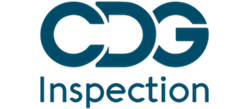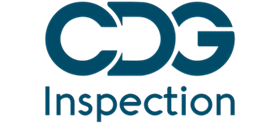Introduction:
Change is a constant in the pharmaceutical manufacturing industry, driven by advancements in technology, regulatory requirements, and business strategies. Managing changes effectively is critical to ensure product quality, patient safety, and regulatory compliance. The European Union Good Manufacturing Practice (EU GMP) regulations provide a framework for assessing the implementation of change control processes in pharmaceutical manufacturing. This article delves into the intricacies of how EU GMP audits assess the implementation of change control processes, highlighting key concepts, methodologies, and best practices.
Change Control in Pharmaceutical Manufacturing:
Change control refers to the systematic process of evaluating, approving, and implementing changes to facilities, equipment, processes, procedures, and systems in pharmaceutical manufacturing. The primary objective of change control is to prevent unintended consequences that could adversely impact product quality, patient safety, or regulatory compliance. Common types of changes include modifications to equipment, process parameters, raw materials, formulations, packaging, and labeling.
EU GMP Framework:
The EU GMP regulations are outlined in Annex 15 of the European Union Guidelines to Good Manufacturing Practice for Medicinal Products for Human and Veterinary Use. Annex 15 specifically addresses the qualification and validation of production processes and facilities. Change control is integrated into this framework, emphasizing the importance of evaluating and controlling any changes that might affect the quality of the product.
Assessment of Change Control Implementation:
EU GMP audits assess the implementation of change control processes by evaluating several key aspects:
- Change Management System: Auditors assess the robustness and effectiveness of the manufacturer’s change management system. This includes reviewing the documented procedures, organizational structure, responsibilities, and interfaces involved in the change control process.
- Risk Assessment: The manufacturer is expected to conduct a risk assessment for each proposed change. This assessment should identify potential risks to product quality and patient safety, and determine appropriate mitigation strategies.
- Documentation: Comprehensive documentation is a cornerstone of change control. Auditors review change control records, which should detail the reason for the change, impact assessment, risk assessment, implementation plan, verification, and authorization. These records provide transparency and traceability of the change process.
- Impact Assessment: Manufacturers must assess the potential impact of the change on product quality, safety, efficacy, and regulatory compliance. This involves evaluating critical process parameters, product attributes, and potential interactions between various elements of the manufacturing process.
- Validation: If a change requires validation, auditors scrutinize the validation protocols and reports. Validation ensures that the change will not negatively affect the product’s quality, and it should be performed using a risk-based approach.
- Verification and Testing: Manufacturers must demonstrate that the change has been correctly implemented and has achieved the intended outcome. This may involve verification activities, such as testing, inspections, and monitoring, to confirm that the change has not introduced unintended consequences.
- Training: Adequate training is crucial to ensure that personnel involved in the change control process understand their roles and responsibilities. Auditors assess the training programs to ensure that employees are equipped to implement changes effectively.
- Communication: Effective communication is essential to ensure that all relevant stakeholders are informed about the proposed change and its implications. Auditors review how the manufacturer communicates changes within the organization and to external parties when required.
- Quality Oversight: Change control is subject to oversight by the quality unit. Auditors evaluate the quality unit’s involvement in change assessments and their decision-making process.
- Post-Change Evaluation: After implementation, auditors assess how the manufacturer evaluates the effectiveness of the change. This involves monitoring product performance, analyzing data, and taking corrective actions if necessary.
Best Practices for Successful Change Control Audits:
Manufacturers can implement several best practices to ensure successful EU GMP audits of their change control processes:
- Proactive Approach: Adopt a proactive approach to change management. Identify potential changes early, assess their impact, and plan for their implementation.
- Risk-Based Approach: Use a risk-based approach to assess changes. Prioritize changes based on their potential impact on product quality and patient safety.
- Cross-Functional Collaboration: Involve cross-functional teams in the change control process. This ensures that all relevant perspectives are considered during impact assessments and decision-making.
- Thorough Documentation: Maintain detailed and accurate documentation throughout the change control process. This documentation should provide a clear trail of the change rationale, assessment, implementation, and verification.
- Training and Competency: Provide ongoing training to personnel involved in the change control process. Ensure that they understand the importance of their roles and are equipped with the necessary skills.
- Transparency in Communication: Communicate changes transparently within the organization. Ensure that all stakeholders are informed about the change, its rationale, and its implications.
- Continuous Improvement: Regularly review and improve the change control process based on feedback, audit findings, and industry best practices.
Conclusion:
Effective change control is pivotal in pharmaceutical manufacturing to uphold product quality, patient safety, and regulatory compliance. EU GMP audits play a crucial role in evaluating the implementation of change control processes. Manufacturers must establish robust change management systems, conduct comprehensive impact assessments, and maintain thorough documentation to succeed in these audits. By adhering to the principles of change control outlined in the EU GMP regulations and implementing best practices, pharmaceutical manufacturers can navigate the complex landscape of change while ensuring the integrity of their products and processes.





